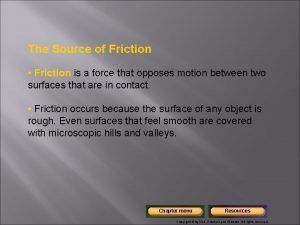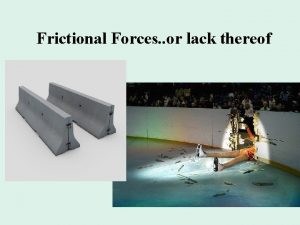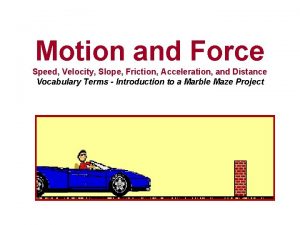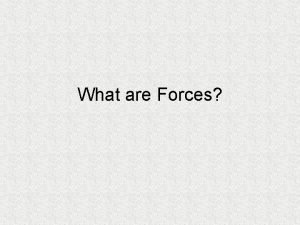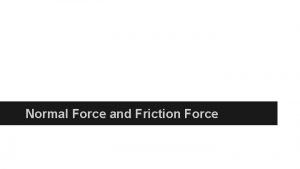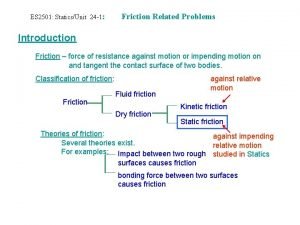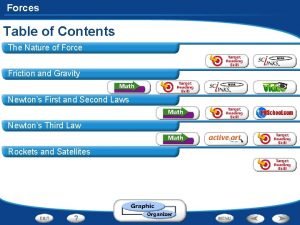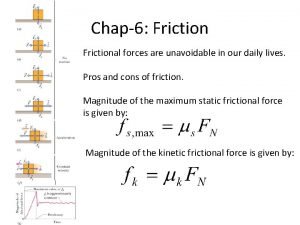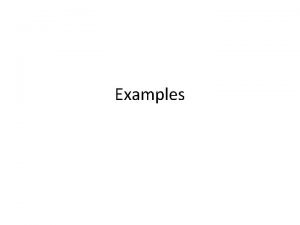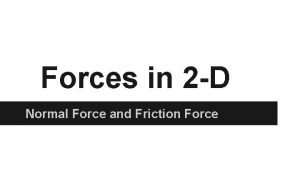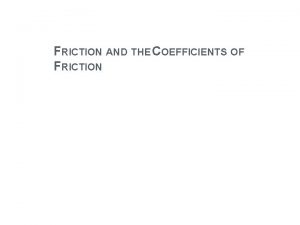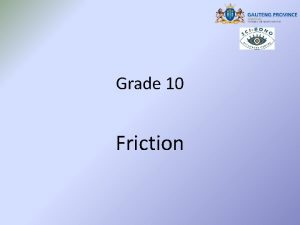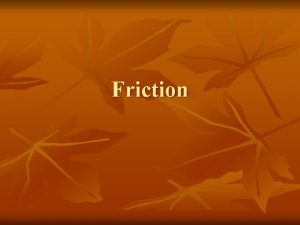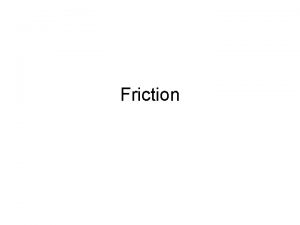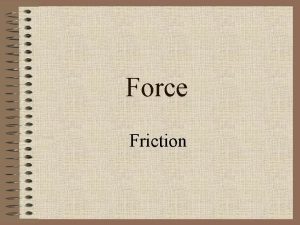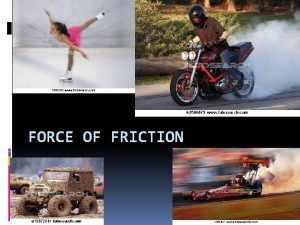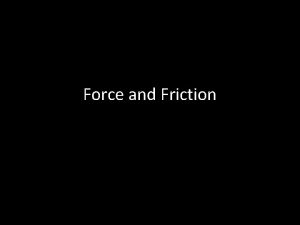The Source of Friction Friction is a force













- Slides: 13

The Source of Friction • Friction is a force that opposes motion between two surfaces that are in contact. • Friction occurs because the surface of any object is rough. Even surfaces that feel smooth are covered with microscopic hills and valleys. Chapter menu Resources Copyright © by Holt, Rinehart and Winston. All rights reserved.

The Source of Friction, continued • When two surfaces are in contact, the microscopic hills and valleys of one surface stick to the tiny hills and valleys of the other surface. This contact causes friction. Chapter menu Resources Copyright © by Holt, Rinehart and Winston. All rights reserved.

The Source of Friction, continued • The Effect of Force on Friction The amount of friction depends on the force pushing the surfaces together. If this force increases, the hills and valleys of the surfaces can come into closer contact. • The close contact increases the friction between the surfaces. Objects that weigh less exert less downward force than objects that weigh more, as shown on the next slide. Chapter menu Resources Copyright © by Holt, Rinehart and Winston. All rights reserved.

Section 3 Friction: A Force That Opposes Motion

Chapter 5 Section 3 Friction: A Force That Opposes Motion The Source of Friction, continued • The Effect of Rougher Surfaces on Friction Rough surfaces have more microscopic hills and valleys than smooth surfaces do. • So, the rougher the surface is, the greater the friction is. Chapter menu Resources Copyright © by Holt, Rinehart and Winston. All rights reserved.

Chapter 5 Section 3 Friction: A Force That Opposes Motion Types of Friction • Kinetic Friction The word kinetic means “moving. ” So, kinetic friction is friction between moving surfaces. • The amount of kinetic friction between two surfaces depends in part on how the surfaces move. Surfaces can slide past each other, or a surface can roll over another surface. Chapter menu Resources Copyright © by Holt, Rinehart and Winston. All rights reserved.

Chapter 5 Section 3 Friction: A Force That Opposes Motion Types of Friction, continued • Usually, the force of sliding kinetic friction is greater than the force of rolling kinetic friction. It is usually easier to move objects on wheels than to slide the objects along the floor, as shown below. Chapter menu Resources Copyright © by Holt, Rinehart and Winston. All rights reserved.

Chapter 5 Section 3 Friction: A Force That Opposes Motion Types of Friction, continued • Static Friction When a force is applied to an object but does not cause the object to move, static friction occurs. • The word static means “not moving. ” The object does not move because the force of static friction balances the force applied. • Static friction disappears as soon as an object starts moving, and then kinetic friction immediately occurs. Chapter menu Resources Copyright © by Holt, Rinehart and Winston. All rights reserved.

Chapter 5 Section 3 Friction: A Force That Opposes Motion Chapter menu Resources Copyright © by Holt, Rinehart and Winston. All rights reserved.

Chapter 5 Section 3 Friction: A Force That Opposes Motion Friction: Harmful and Helpful • Without friction, a car’s tires could not push against the ground to move the car forward, and the brakes could not stop the car. Without friction, a car is useless. • However, friction can also cause problems in a car. Friction between moving engine parts increases their temperature and causes the parts to wear down. • Friction can be both harmful and helpful, so it may be necessary to decrease or increase friction. Chapter menu Resources Copyright © by Holt, Rinehart and Winston. All rights reserved.

Chapter 5 Section 3 Friction: A Force That Opposes Motion Friction: Harmful and Helpful, continued • Some Ways to Reduce Friction One way to reduce friction is to use lubricants. Lubricants are substances that are applied to surfaces to reduce the friction between the surfaces. • Some examples of common lubricants are motor oil, wax, and grease. Lubricants are usually liquids, but they can be solids or gases. Chapter menu Resources Copyright © by Holt, Rinehart and Winston. All rights reserved.

Chapter 5 Section 3 Friction: A Force That Opposes Motion Friction: Harmful and Helpful, continued • Friction can be reduced by switching from sliding kinetic friction to rolling kinetic friction. Ball bearings can be placed between wheels and axels to make it easier for wheels to turn by reducing friction. • Another way to reduce friction is to make surfaces that rub against each other smoother. Chapter menu Resources Copyright © by Holt, Rinehart and Winston. All rights reserved.

Chapter 5 Section 3 Friction: A Force That Opposes Motion Friction: Harmful and Helpful, continued • Some Ways to Increase Friction Making surfaces rougher is one way to increase friction. For example, sand scattered on icy roads keeps cars from skidding. • Another way to increase friction is to increase the force pushing the surfaces together. For example, if you are sanding a piece of wood, you can sand the wood faster by pressing harder on the sandpaper. Chapter menu Resources Copyright © by Holt, Rinehart and Winston. All rights reserved.
 What is force
What is force Learning objectives of friction
Learning objectives of friction Sources of friction
Sources of friction Frictional unemployment
Frictional unemployment Acceleration and friction
Acceleration and friction Friction force characteristics
Friction force characteristics What two factors affect the force of friction
What two factors affect the force of friction Force of friction images
Force of friction images Types of friction
Types of friction Nature of force
Nature of force How to determine magnitude of friction force
How to determine magnitude of friction force Calculate force of friction
Calculate force of friction Friction force
Friction force How to find force of friction
How to find force of friction


